Light and fluffy yeasted dough, rolled with a tart and rich plum butter, and topped with a vanilla custard, these German Plum Rolls are the end of summer cinnamon roll.

Can I use any plums for the Pflaumenmus?
So traditionally, Italian plums aka prune plums or purple plums, are used for plaumenmus. They are smaller than regular plums and have a green/yellow inside which becomes a vibrant red and purple color when cooked or baked. That being said other plums will work too they just have a bit more moisture in them and therefore take longer to reach the same consistency. There is no need to peel the plums but if you prefer a smooth jam you can blend it once cooled.
Can these be made in advance?
As with most yeasted doughs, these taste best when freshly made. I love this recipe because it makes 6 which is usually somewhat doable to eat in a day across a few people. However, the pudding and plum butter can be made 3-4 days in advance. The rolls can also be assembled without the pudding, covered, and placed in the fridge overnight and then baked in the morning.
Can I leave off the custard?
Short answer is yes, you don’t have to make the custard. But, if you don’t, I recommend making these kirschschnecken instead with lemon glaze and streusel.
What kind of flour is best for plum rolls?
These rolls work best with all purpose flour – there is no need to use bread flour as the dough is stiff and strong enough without it.
Tips for making Plum rolls
- To prevent clumps in your pudding, make sure to whisk the cornstarch in with the sugar before adding the wet!
- While cooking the pudding, whisk constantly, if you walk away the cornstarch could start to clump leaving you with a clumpy pudding.
- Don’t forget to lay plastic wrap on the surface of the pudding while it chills to prevent it from forming a skin.
- When making the plum butter, don’t leave it alone on the stove for more than five minutes as the sugars will burn if not stirred regularly.
- Store bought plum butter can be used instead!
- In order for the dough to grow as fast as possible, the ingredients for the dough should be luke warm or room temperature. The colder the ingredients, the longer the dough will take to rise.
- As with most yeasted doughs, be sure to knead to dough until it is smooth. For me this took about 20 minutes on low speed.
- When rolling out the dough, don’t press too hard that you tear the dough – it should be a gentle, even amount of pressure and use a little flour so the dough doesn’t stick. If the dough keeps shrinking back, let it rest for a few minutes to relax the gluten and then roll again.
- In order for the rolls to grow as quickly as possible, make sure the jam is at room temperature or slightly warm.
- Cutting through the roll to create the slices can get a little messy. For best results use a thin sharp knife to saw through the roll and cut the slices. Alternatively, you could roll the dough out, spread the jam over it, and then cut it into the strips first and then roll each strip individually.
Additional Pastries to try!
- Krapfen | German Jam filled Donuts
- Lemon Blueberry Streuseltaler
- Himbeer Schnecken | German Raspberry Rolls
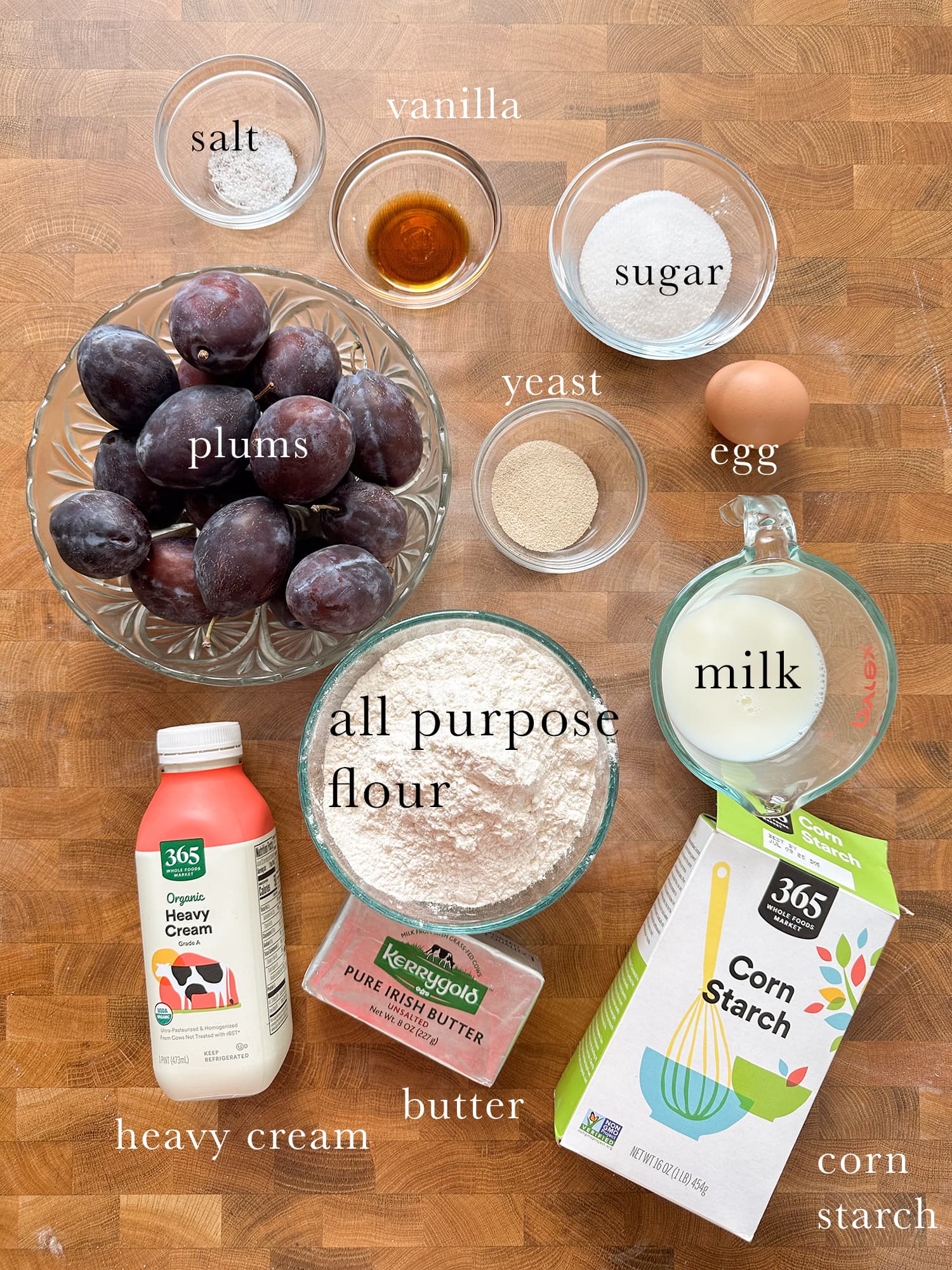
Ingredients
- Plums: Italian plums also known as prune plums, are best for this recipe and most traditional. However, other plums will work too they may just take a bit longer for the water to cook out.
- Corn Starch: Corn starch is used in the vanilla pudding to thicken and stabilize it but arrow root starch will work as well.
- All Purpose Flour: Any all purpose flour will work for these! I have not yet tried any other flours with this recipe.
- Sugar: This recipe uses granulated sugar in the dough, the plum butter, and the custard as well as the powdered sugar dusting on top.
- Yeast: In this recipe, instant yeast is used – just be sure it is still active. Active dry yeast will work as well it just takes a bit longer for the dough to rise.
- Salt: A touch of salt in the dough enhances all of the flavors and balances out the sweetness.
- Milk: The plum rolls use milk as the liquid in the dough as well as in the pudding; I recommend whole milk cows milk; however, they will also work with non-dairy milks such as almond milk.
- Unsalted Butter: The butter adds moisture to the dough as well as richness to the pudding!
- Eggs: I use standard large eggs from the store. There is one whole egg in the dough and one egg yolk in the pudding.
- Vanilla Extract: Vanilla extract adds flavor to the dough and the pudding.
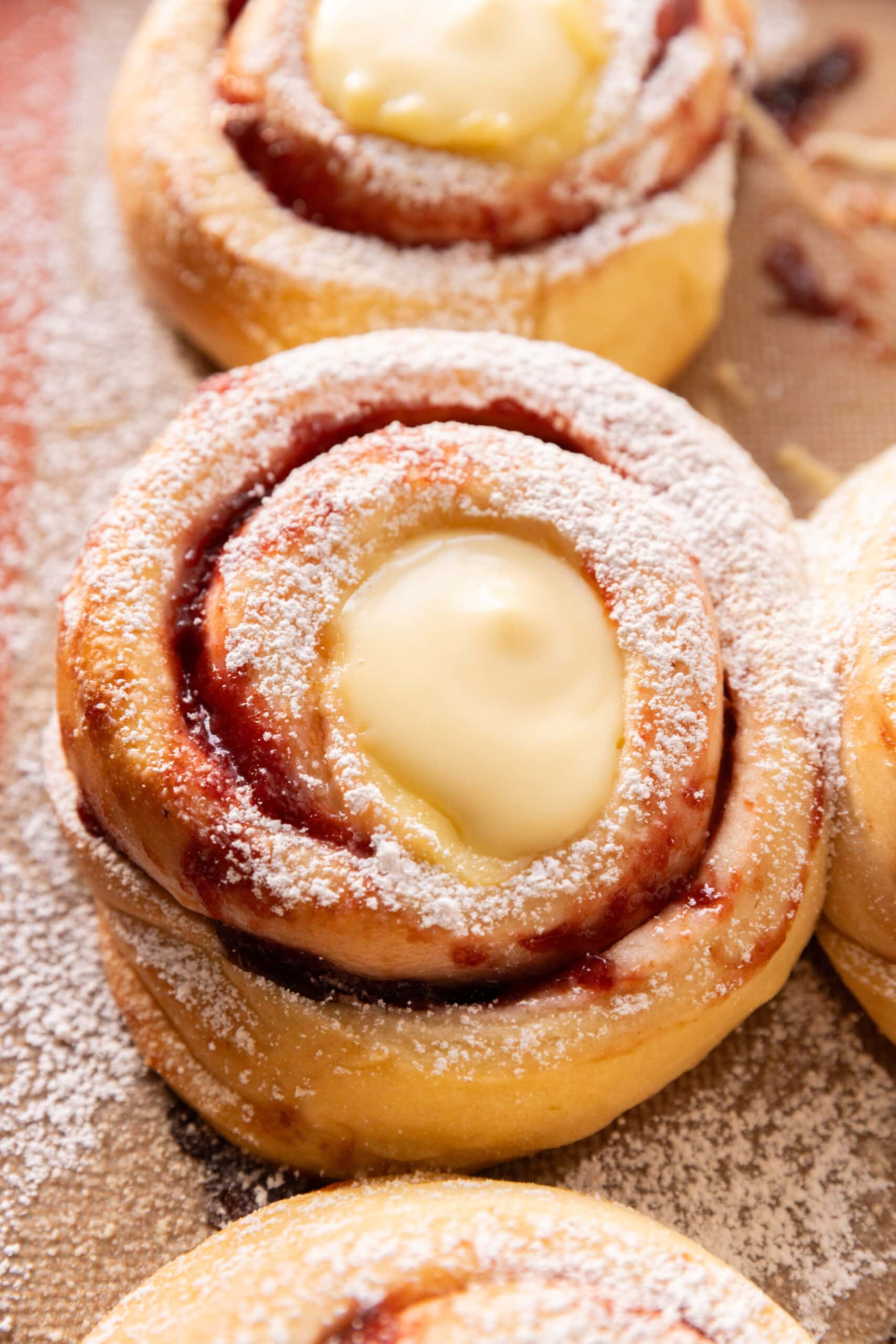
How to make German Plum Rolls?
Pflaumenmus (Plum Butter)
- The night before you plan to make these rolls (or up to 5 days in advance), you need to macerate the plums so they can be cooked into a plum butter the next day.
- To macerate the plums, rinse and dry them. Then remove any stems and cut in half lengthwise around the pit to remove it. Place all of the pitted plums into a large pot or bowl. I used a coated cast iron dutch oven which works perfectly but don’t use one that isn’t coated as the sugar and acid will be too much for the exposed iron.
- Pour in the granulated sugar and stir to combine.
- Cover the pot or bowl and leave it to sit at room temperature overnight.
- Place a small plate in your freezer, this will be used to test the plum butter.
- When you are ready to cook the plum butter the next day, remove the cover and place the pot with the macerated plums (if they were in a bowl, transfer them to a pot at this step) over the lowest heat possible.
- You want to cook this plum butter low and slow, stirring frequently to prevent the sugar from burning. This takes about an hour but could be a little less or more depending on how many plums you’re cooking.
- Continue cooking until the mixture has thickened to the point where you don’t really see any plum juices running around.
- To test the doneness of the pflaumenmus, take the plate out of the freezer and spoon 1 tablespoon of it onto the plate. Allow it to sit for 30 seconds to a minute. Then, when you wipe the jam off with your finger it should wrinkle and be quite thick.
- Once cooked, remove from the heat and pour the plum butter into an airtight container and store in the fridge until ready to use.

Make the Pudding
- In a small sauce pot, whisk together the cornstarch, sugar, and salt.
- Pour in the milk, heavy cream, and egg yolk and whisk again.
- Place the pot over medium heat and whisk. Continue to whisk until the mixture thickens and just starts to bubble and thicken.
- Remove the pot from the heat and stir in the butter and vanilla extract until the butter has fully melted.
- Pour into a large shallow dish to cool. Lay a piece of plastic wrap on the surface to prevent it from forming a skin.
Dough
- In the bowl of a stand mixer add in the flour, sugar, and yeast, then whisk to combine.
- Add in the warm milk, butter, egg, salt, and vanilla. Use the dough hook attachment to knead the dough on medium speed until just combined and then turn it down to low and knead until smooth and the sides of the mixing bowl are clean.
- Shape the dough into a ball and place in a lightly greased bowl (can be the same mixing bowl). Cover the bowl with a lid or plastic and place somewhere warm to rise for 45 minutes or until doubled in size.
- Preheat the oven to 350 F and place a rack in the center of the oven.

Assemble and Bake the Plum Rolls
- Line one baking sheet with parchment paper or a silicone baking mat.
- Once doubled in size, lightly sprinkle the dough with flour and punch out the air from the dough. I recommend not re-kneading it because this will tighten the gluten making it difficult to roll out but just be sure to smoosh out all of the air.
- Lightly flour your work surface and pat the dough into a skinny rectangle. Gently roll the dough out to approximately 30 cm x 50 cm. I recommend rolling the short end closest to you a little thinner so the center isn’t too thick.
- Spread 30 grams of the very soft butter over the entire surface of the dough. I recommend doing this with a pastry brush or an offset spatula.
- Spoon the plum butter over the thin butter layer and use an offset spatula or a rubber spatula to spread it over the whole surface of the dough, all the way to the edges.
- Starting with the short side closest to you, roll the dough up tight but not too tight that all of the jam squeezes out.
- Use a knife and ruler to mark the log into 6 even slices.
- Use the same sharp knife to cut the roll into slices. Lay each of the slices onto the lined baking sheet. Tuck about a 1/2″ of the end of the swirl under each roll.
- Gently press down on top of each slice, it will be a little messy, but this helps to give them their characteristic large swirl.
- Press the center of the swirl down to make a little well. Spoon about 2-3 tablespoons of the vanilla custard into the center well.
- Leave the rolls to proof for about 20 minutes, they should look like they have grown slightly and are a little puffy.
- Once proofed, bake the rolls for 15 minutes in the preheated oven. Then rotate the pan 180 degrees and bake for another 15 minutes until golden brown.

Finishing touches
- Once baked and slightly golden brown, take the baking sheet out of the oven and place on a wire cooling rack.
- Immediately brush the browned dough with 30 more grams of butter. Then leave them to cool for at least 5 minutes before serving dusting with powdered sugar.
- Last but not least, fill a piping bag with the remaining pudding and pipe it into the center where the baked pudding is. Careful not to push the tip of the bag too far down so that it doesn’t squeeze out of the bottom.

German Plum Rolls
Ingredients
Plum Butter
- 900 grams plums with pits, approximately 350 grams plum jam
- 150 grams granulated sugar
Vanilla Pudding
- 50 grams granulated sugar
- 10 grams corn starch or arrow root starch
- 1/4 teaspoon salt
- 200 milliliters whole milk
- 50 milliliters heavy cream
- 2 teaspoons vanilla extract
- 20 grams butter
Dough
- 350 grams all purpose flour
- 50 grams granulated sugar
- 12 grams instant yeast
- 1/2 teaspoon salt
- 150 milliliters milk lukewarm
- 80 grams butter soft
- 1 egg room temperature
- 1 teaspoon vanilla extract
Extras
- 60 grams butter very soft
- 50 grams powdered sugar
Instructions
Pflaumenmus (Plum Butter)
- The night before you plan to make these bars (or up to 5 days in advance), you need to macerate the plums so they can be cooked into a plum butter the next day.
- To macerate the plums, rinse and dry them. Then remove any stems and cut in half lengthwise around the pit to remove it. Place all of the pitted plums into a large pot or bowl. I used a coated cast iron dutch oven which works perfectly but don't use one that isn't coated as the sugar and acid will be too much for the exposed iron.
- Pour in the granulated sugar and stir to combine. Optionally add in two teaspoons of cinnamon at this time.
- Cover the pot or bowl and leave it to sit at room temperature overnight.
- Place a small plate in your freezer, this will be used to test the plum butter.
- When you are ready to cook the plum butter the next day, remove the cover and place the pot with the macerated plums (if they were in a bowl, transfer them to a pot at this step) over the lowest heat possible.
- You want to cook this plum butter low and slow, stirring frequently to prevent the sugar from burning. This takes about an hour but could be a little less or more depending on how many plums you're cooking.
- Continue cooking until the mixture has thickened to the point where you don't really see any plum juices running around.
- To test the doneness of the pflaumenmus, take the plate out of the freezer and spoon 1 tablespoon of it onto the plate. Allow it to sit for 30 seconds to a minute. Then, when you wipe the jam off with your finger it should wrinkle and be quite thick.
- Once cooked, remove from the heat and pour the plum butter into an airtight container and store in the fridge until ready to use.
Pudding
- In a small sauce pot, whisk together the cornstarch, sugar, and salt.
- Pour in the milk, heavy cream, and egg yolk and whisk again.
- Place the pot over medium heat and whisk. Continue to whisk until the mixture thickens and just starts to bubble and thicken.
- Remove the pot from the heat and stir in the butter and vanilla extract until the butter has fully melted.
- Pour into a large shallow dish to cool. Lay a piece of plastic wrap on the surface to prevent it from forming a skin.
Dough
- In the bowl of a stand mixer add in the flour, sugar, and yeast, then whisk to combine.
- Add in the warm milk, butter, egg, salt, and vanilla.
- Use the dough hook attachment to knead the dough on medium speed until just combined and then turn it down to low and knead until smooth and the sides of the mixing bowl are clean.
- Shape the dough into a ball and place in a lightly greased bowl, cover with a lid or plastic and place somewhere warm to rise for 45 minutes or until doubled in size.
- Preheat the oven to 350 F and arrange two racks so that they divide the oven into thirds.
Assemble
- Line one baking sheet with parchment paper or a silicone baking mat.
- Once doubled in size, lightly sprinkle the dough with flour and punch out the air from the dough. I recommend not re-kneading it because this will tighten the gluten making it difficult to roll out but just be sure to smoosh out all of the air.
- Lightly flour your work surface and pat the dough into a skinny rectangle. Gently roll the dough out to approximately 30 cm x 50 cm. I recommend rolling the short end closest to you a little thinner so the center isn't too thick.
- Spread 30 grams of the very soft butter over the entire surface of the dough. I recommend doing this with a pastry brush or an offset spatula.
- Spoon the plum butter over the thin butter layer and use an offset spatula or a rubber spatula to spread it over the whole surface of the dough, all the way to the edges.
- Starting with the short side closest to you, roll the dough up tight but not too tight that all of the jam squeezes out.
- Use a knife and ruler to mark the log into 6 even slices.
- Use the same sharp knife to cut the roll into slices. Lay each of the slices onto the lined baking sheet. Tuck about a 1/2" of the end of the swirl under each roll.
- Gently press down on top of each slice, it will be a little messy, but this helps to give them their characteristic large swirl.
- Tuck about a 1/2" of the end of the swirl under each roll.
- Gently press down on top of each slice, it will be a little messy, but this helps to give them their characteristic large swirl.
- Press the center of the swirl down to make a little well. Spoon about 2-3 tablespoons of the vanilla custard into the center well.
- Leave the rolls to proof for about 20 minutes, they should look like they have grown slightly and are a little puffy.
- Once proofed, bake the rolls for 15 minutes in the preheated oven. Then rotate the pan 180 degrees and bake for another 15 minutes until golden brown.
Finishing
- Once baked and slightly golden brown, take the baking sheet out of the oven and place on a wire cooling rack.
- Immediately brush the browned dough with 30 more grams of butter. Then leave them to cool for at least 5 minutes before serving dusting with powdered sugar.
- Last but not least, fill a piping bag with the remaining pudding and pipe it into the center where the baked pudding is. Careful not to push the tip of the bag too far down so that it doesn't squeeze out of the bottom.
Notes
- To prevent clumps in your pudding, make sure to whisk the cornstarch in with the sugar before adding the wet!
- While cooking the pudding, whisk constantly, if you walk away the cornstarch could start to clump leaving you with a clumpy pudding.
- Don’t forget to lay plastic wrap on the surface of the pudding while it chills to prevent it from forming a skin.
- When making the plum butter, don’t leave it alone on the stove for more than five minutes as the sugars will burn if not stirred regularly.
- Store bought plum butter can be used instead!
- In order for the dough to grow as fast as possible, the ingredients for the dough should be luke warm or room temperature. The colder the ingredients, the longer the dough will take to rise.
- As with most yeasted doughs, be sure to knead to dough until it is smooth. For me this took about 20 minutes on low speed.
- When rolling out the dough, don’t press too hard that you tear the dough – it should be a gentle, even amount of pressure and use a little flour so the dough doesn’t stick. If the dough keeps shrinking back, let it rest for a few minutes to relax the gluten and then roll again.
- In order for the rolls to grow as quickly as possible, make sure the jam is at room temperature or slightly warm.
- Cutting through the roll to create the slices can get a little messy. For best results use a thin sharp knife to saw through the roll and cut the slices. Alternatively, you could roll the dough out, spread the jam over it, and then cut it into the strips first and then roll each strip individually.

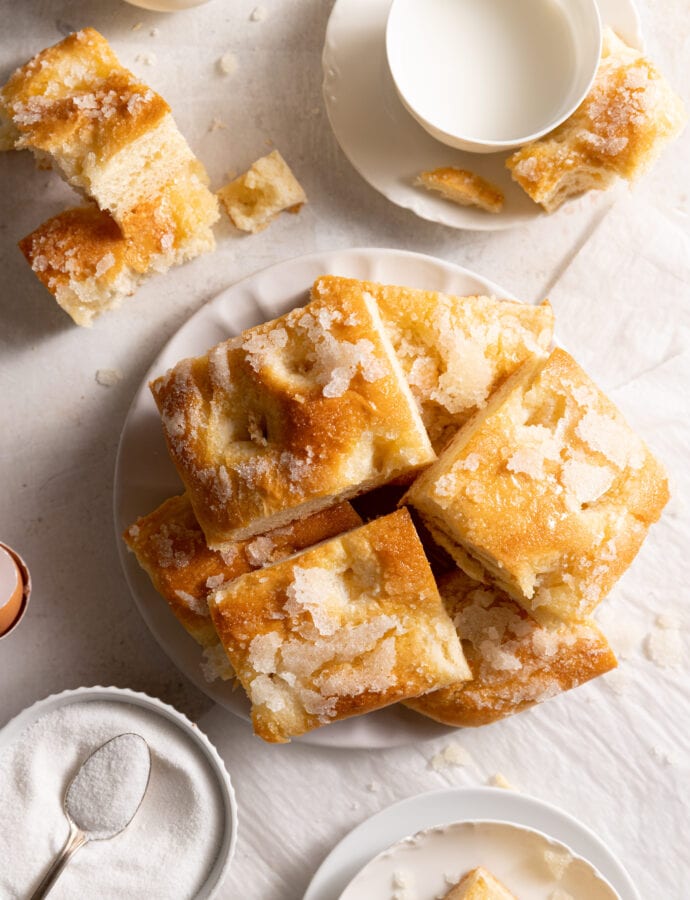
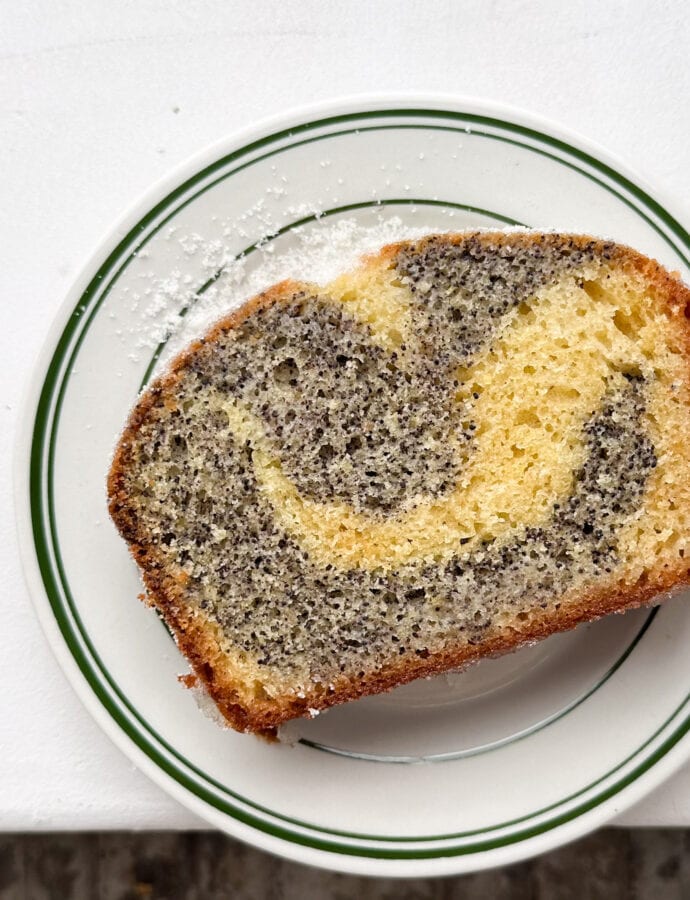
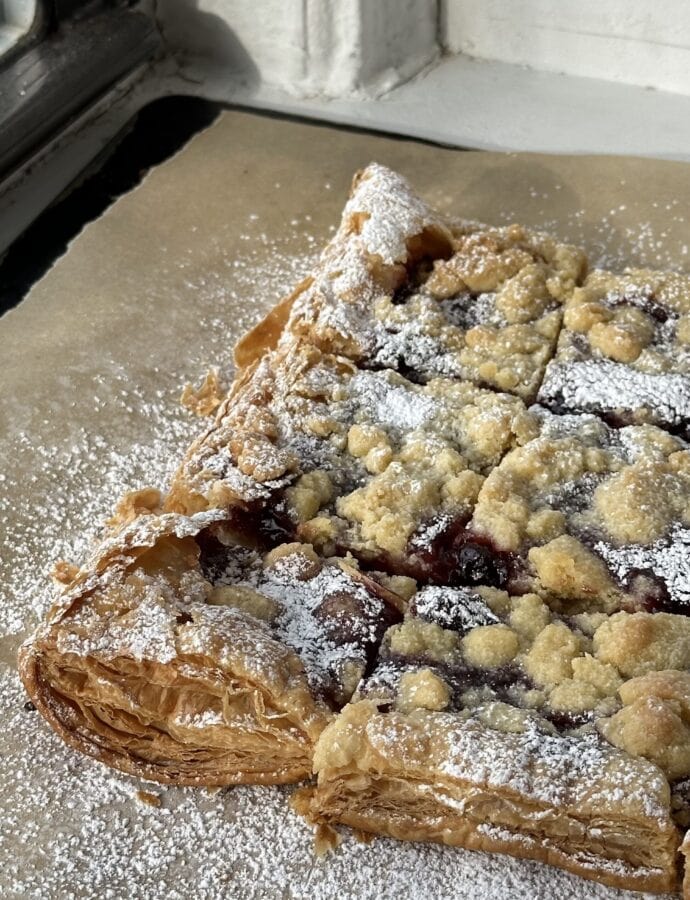
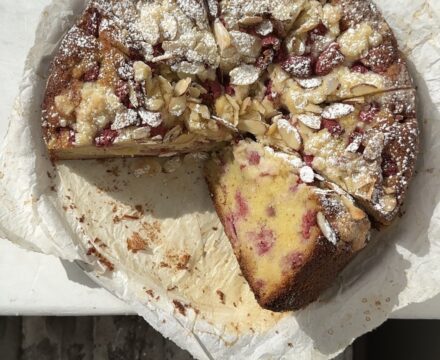
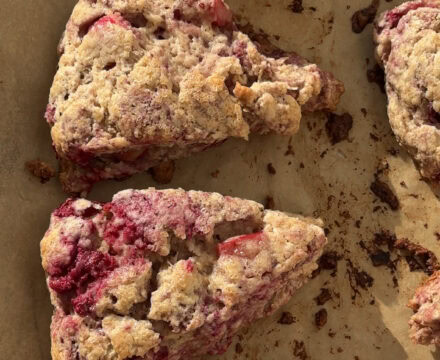
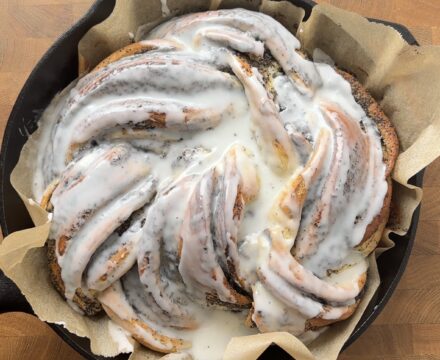

my notes are: the dough didn’t have a huge rise for me BUT the buns looked like proper buns anyway when baked. the vanilla pudding is stunningly easy to make (i think the yolk is missing in the ingredient list) and is yummy on its own. I had a great time making these and will make again.